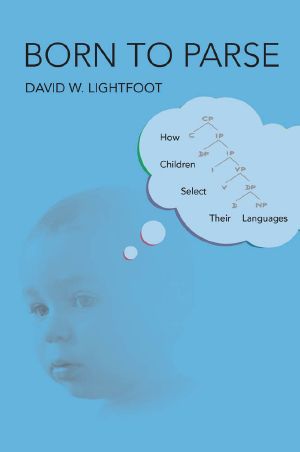Born to Parse, How Children Select Their Languages

- Authors
- Lightfoot, David W.
- Publisher
- MIT Press
- Tags
- parameters; universal grammar; parsing; language acquisition; variable properties; syntactic change; internal language; external language; learnability; phase transitions; domino effects; interfaces; population biology; individualism; darwin’s finches; phase transitions; scandinavian languages; english
- Date
- 2020-08-25T00:00:00+00:00
- Size
- 0.56 MB
- Lang
- en
An argument that children are born to assign structures to their ambient language, yielding a view of language variation not based on parameters defined at UG. In this book, David Lightfoot argues that just as some birds are born to chirp, humans are born to parse--predisposed to assign linguistic structures to their ambient external language. This approach to language acquisition makes two contributions to the development of Minimalist thinking. First, it minimizes grammatical theory, dispensing with three major entities: parameters; an evaluation metric for the selection of grammars; and any independent parsing mechanism. Instead, Lightfoot argues, children parse their ambient external language using their internal language. Universal Grammar is "open," consistent with what children learn through parsing with their internal language system. Second, this understanding of language acquisition yields a new view of variable properties in language--properties that occur only in certain languages. Under the open UG vision, very specific language particularities arise in response to new parses. Both external and internal languages play crucial, interacting roles: unstructured, amorphous external language is parsed and an internal language system results.
Lightfoot explores case studies that show such innovative parses of external language in the history of English: development of modal verbs, loss of verb movement, and nineteenth-century changes in the syntax of the verb to be. He then discusses how children learn through parsing; the role of parsing at the syntactic structure's interface with the externalization system and logical form; language change; and variable properties seen through the lens of an open UG.